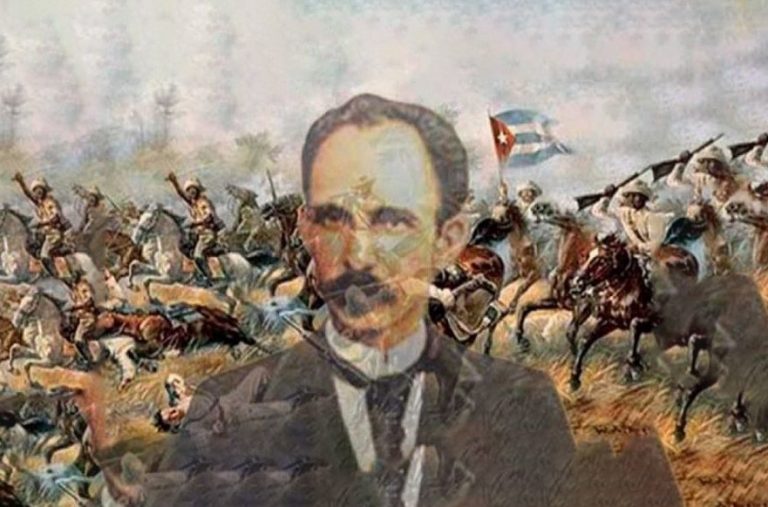By: Lic. Yudel Estupiñán Ponce de León
Research Direction of OHCC.
The new period of the war for independence broke through with its terrible voice and its liberating force; the Cuban people were in a better position to undertake the battle than in 1868.
The incompatibility with the interests of the metropolis prevailed. The feeling of an unrepentant aversion against the colonial administration, it was tired of the demands of bribery, robbery and embezzlement of the bank robbers. On the other hand, the Cuban was scandalized by the denial of resources for the improvement of their living conditions, the lack of schools, the pitiful situation of teachers who were owed months of salary, the terrible sanitary conditions, the lack of paths and disdain for the creation of other infrastructure works.
He found it odious and unbearable the repressions in its own land, the lack of liberty, the abuses of the civil guard, the oppression that it felt almost on every act of it, the exclusion in its own homeland when it came to occupying public positions and very few were able to be voters in the elections to the various positions in municipalities, province and the courts. But meanwhile, they had to pay the more than 50,000 pesos that the General Captains of the Island received annually or the more than 96,000 of the overseas ministers, and also the payroll of all the pariah of officials sent by the Peninsula.
Along with all this, the Cuban people were becoming aware of them, because the revolution of yesteryear had given pride and meaning to its own history. They knew that they could wage a war against a very powerful adversary, and if were necessary for a long time.
The feeling of belonging in a given land and its aspiration to direct itself was a reflection of the features of a nation and in which its nationality has been forged. The antagonism, definitive and irreversible, had to be solved between the colony and the metropolis.
To achieve the outbreak of the Necessary War on February 24, 1895, fruit of the work of José Martí organization, were very important the creation of the revolutionary clubs, the Cuban Revolutionary Party with its bases and statutes and the creation of the newspaper Patria . On March 25, 1895, the key document of the contest in Cuba, made by Martí and underlay with the signature of Máximo Gómez: the Manifesto of Montecristi,; in it, the objectives of the recently begun war were exposed to the Cuban people (and to the world).
With the catastrophe in the confluences of the Cauto and the Contramaestre, as Enrique Collazo described the fall in combat on May 19 of the same year 1895 of José Martí, his irreplaceable figure and his failure was a misfortune of such magnitude as to delay the approved plans .
After the appropriate orders to Bartolomé Masó, Generalísimo Máximo Gómez continued with very few forces towards Camagüey. Region that by virtue of his military experience he considered of vital importance to ensure the success of the fight. Camagüey, which seemed to have been asleep since the outbreak, had not been completely involved in the war, since it was not for several parties that operated in an errant way in the region. It would not be until the arrival of Gómez on June 5, that the uprising in Camagüey would really be encouraged.
There he waited, to launch and melt into a fight embrace, that old and gallant revolutionary of the Ten Years War: Salvador Cisneros Betancourt. For the 67 years old marquis, it had not been worth the sabotage of those who tried to prevent the fight in Camagüey. Of Cisneros Gómez, he wrote “The handsome old man, the good guy, the marquis was the first one to fight, accompanied by a few young people.”
Along with Salvador Cisneros, 20 young Camagüey men emulated the times of Clavellinas and launched into the struggle. The young people, children of veterans and families almost disappeared in the flames of the last war, which had grown up listening to the stories of that war, were the ones who took up arms. The encounter of Gómez with the patricio of Camagüey was almost immediate. On June 11 they merged in an embrace that guaranteed the struggle for full independence.
Names like those of Luis Suárez and Miguel Varona Guerrero near Ingenio Senado, in Nuevitas; Mauricio Montejo in the area of Ingenio Lugareño, also in Nuevitas; in Santa Cruz del Sur, Francisco Recio and Mario García Menocal; Rafael Labrada in Sierra de Cubitas. Also Oscar Primelle Cisneros, Francisco Mendizabal, León Primelle Agramonte, among others revived the independence tradition of Camagüey and guaranteed the historical continuity of that liberating struggle.
Photo: taken from www.acn.cu
Translated into English by José Carlos García Cruz






